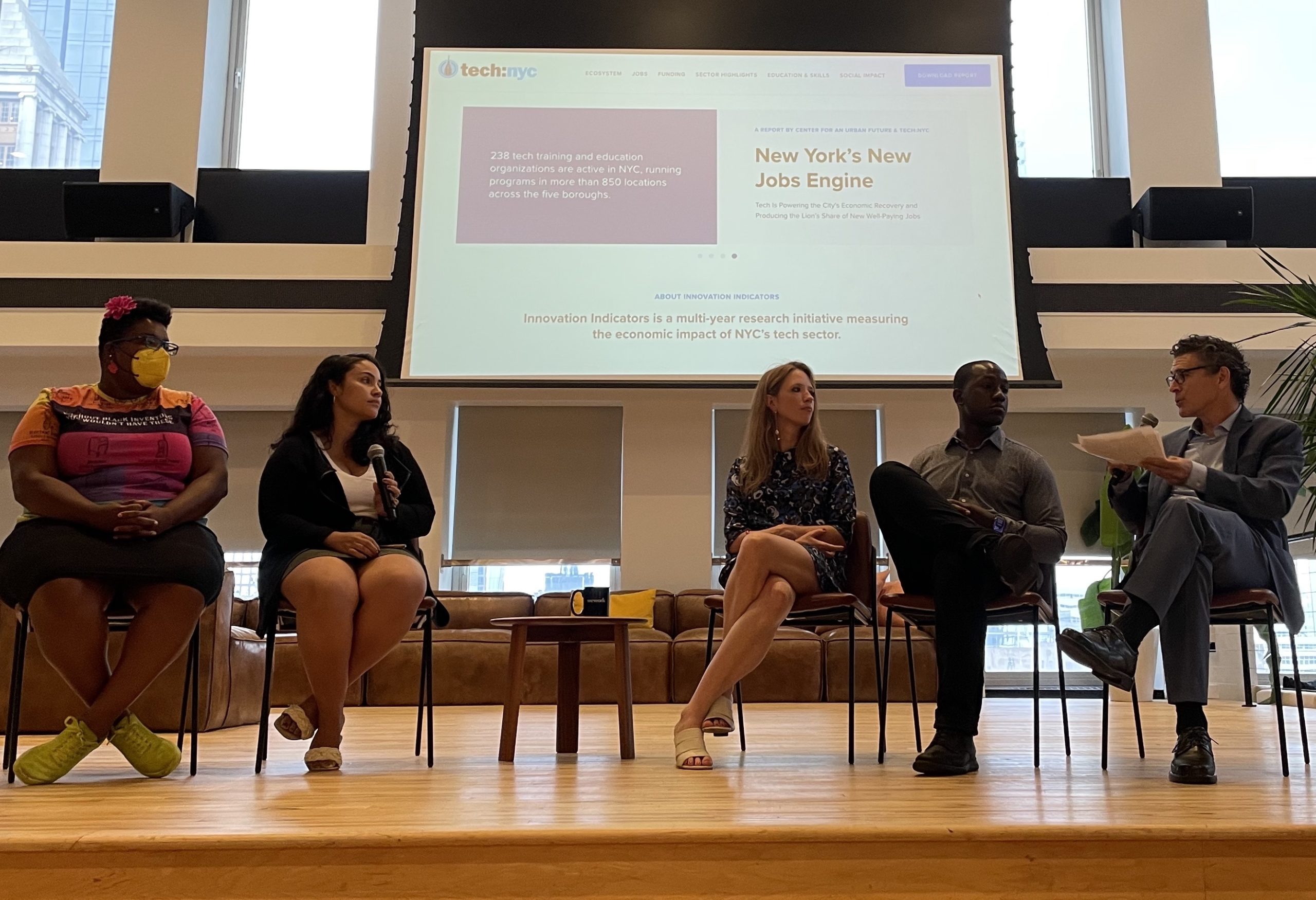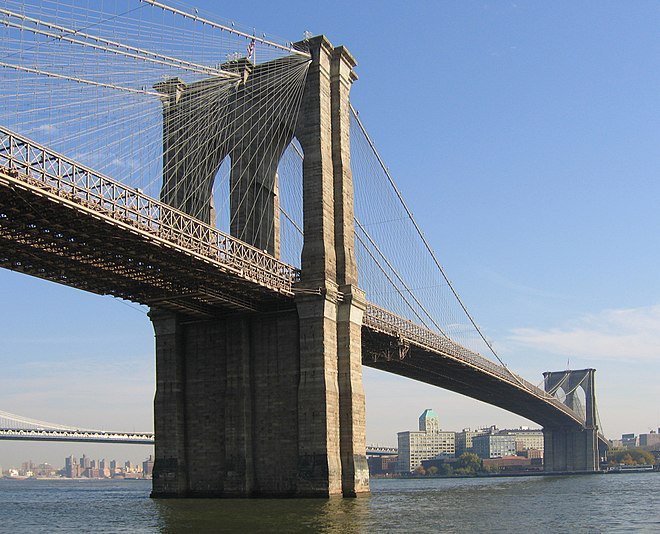In a Manhattan WeWork office space Thursday, the unabashedly business-friendly Mayor Adams pledged his continued allegiance to the growing tech sector at the release of a new Center for an Urban Future and tech:NYC report on the subject.
The “tech” jobs report includes data ascertaining the growth of the tech industry and interrelated fields like venture capital, start-ups, cryptocurrency and cybersecurity and cites tech’s growth from 2.6% of the private workforce in 2010 to 5.2% today as a laudable development.
Center for Urban Future Executive Director and host of the event, Jonathan Bowles, and tech:NYC Executive Director Jason Myles Clark discussed the report’s highlights and presented two main takeaways. The first is that tech is leading industries in jobs – accounting for 17% of the city’s job growth between 2010 and today.
The second can be summarized by a line from the report referring to the city’s ability to attract and retain tech talent, “it is by no means a given that the tech sector will continue to add jobs here at anything close to the rate of the past decade.”
Citing several examples in each tech sub-industry, the report hails emergent and established startups in women and family tech, blockchain, virtual reality, edtech or e-learning tech, A.I./machine learning, cybersecurity, real estate, direct-to-consumer/e-commerce, business-to-business, and consumer health. The fastest growing tech startups are in cryptocurrency and blockchain, who have seen their counts more than double since 2016. Startups are overwhelmingly concentrated in Manhattan and to a lesser extent, Brooklyn.
Bowels put forward the question to the mayor if New York has an opportunity to bring more employees to establish footholds in the city.
“Yes, we have a good product, and it’s as though we have been ashamed of our product, and the Mayor of London came to New York to meet with me, the Miami mayor, I see her all the time, meeting with me, we have mayors from all across the globe coming to New York, to steal our town, to steal our ideas, and to steal our companies,” said Adams.
Adams then acknowledges the “pipeline” problem, where historically marginalized communities, located outside of the city limits or the central tech hubs in Manhattan or Brooklyn do not have the same opportunities to pursue a career in tech.
“When you’re allowed to have the transportation infrastructure that we have, when you’re allowed to have a number of colleges that are continuing to produce future talent, we need to improve on talent by building the pipeline. That’s been one of our failures. So many people believe they must reach outside the city to get the talent, because we’re not doing a good job of building a pipeline,” said Adams.

A long duration of the panelist conversation’s centered around the inequity in tech and what can be done to promote diversity in the field.
The share of women and non-white people in tech’s workforce and among top-level executives remains dismally below their share in the city’s population. Using Census data, the report finds over 45% of the tech workforce are white while making up 40% in the city’s overall workforce (and 41% of the city’s population) and almost 30% of tech workers identify as Asian, which is about double the proportion comprising the city’s overall workforce. However, Black and Latino workers are disproportionately underrepresented in tech – Black tech workers comprise more than 9% of the industry’s workforce compared to over 18% in the city, and over 11% of tech workers are Latino compared to a nearly 25% workforce participation in the city.
Council Member Jennifer Gutiérrez (D-Brooklyn), chair of the council’s Technology Committee, spoke about where the city council and government can get behind the tech industry and hopes that advancements in tech can be leveraged in the public sector as well.
“We do need to focus on the investment of creating pathways for not just tech companies to come here, but really inspiring the potential for existing [city] agencies to really evolve in a tech way,” said Council Member Gutiérrez.
The council member challenged the narrative that the city is losing the best in tech to more favorable states and said, “and of course, I’m interested in pathways, it’s not enough for us to say, hey, come to New York, you’re already coming to New York, it’s the center of the world,” and argues both tech leaders and the council need to do more to invest in city’s own residents across the five boroughs for sustained commitments rather than one-time investments.
“But it is equally important that we say, hey, we want to have jobs here. We want them in my district. I represent wonderful Williamsburg, beautiful Bushwick and everyone wants to be here. But I am interested in who wants to invest here and not just financially that’s going to benefit you and your shareholders,” said Council Member Gutiérrez.
The panelists encouraged tech leaders to spearhead robust pipelines into tech starting in primary and secondary schools and continuing with internal workforce development opportunities.
The discussion also highlighted the challenges and opportunities hybrid or remote work presents, and the report cites the average daily office attendance for companies in the tech industry at the end of April was 44%. Mayor Adams says this is problematic particularly for the service establishments and restaurants in the surrounding neighborhoods who rely on office workers for business.
The panelists mostly spoke about the benefits of the remote working option, and expect the numbers of in-person workers will continue to increase.
“I don’t think that New York’s lost any of its vibrancy. And so I think that most of the people that started at Maven, and we’re back even before COVID, are still here, and we’ve lost the occasional person here and there,” said Kate Ryder, founder and CEO of Maven, adding after that she thinks that having a hybrid workplace will enable Maven to grow.
Understanding that a welcoming community is one with accessible parks, open spaces and reliable transportation, the report ends with recommendations to support continued growth in the tech sector, and prioritizing investments in “transit, parks, safety, and culture” is first.
“What precludes tech from being more diverse is there’s a tendency to buy rather than build. There’s not a lot of internal educational opportunities,” said Jarrid Tingle, co-founder and managing partner of Harlem Capital.








